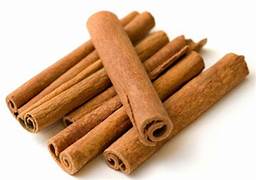Cinnamon- a sweet wood spices
{Topic:- What is cinnamon, common name in India & Abroad, processing technique, cultivation of cinnamon in India, Types , Culinary use, Popular brand in Indian market}
What Is Cinnamon?
Cinnamon is a popular spices obtain from an inner bark of the tropical evergreen tree belong to the laurel family. Its plant is native to Sri Lanka or Ceylon, Malabar cost of India, Myanmar etc. It is also cultivated in the countries like south American or Caribbean countries such as west indies.
The word cinnamon is derived from a Greek word “Kinnamon or Kinnamomon” meaning sweet wood.

Common name of cinnamon in India: –
- Daal chinni in Hindi, Urdu, Gujrati, Punjabi, Oriya & Marathi,
- Darchini in Bengali,
- Karuvapatta in Malayalam,
- Dalchinachekka in Telgu,
- Chakke or Lavana patte in Kannada.
- Darushila in Sanskrit
Common name of cinnamon in other countries: –
- Querfa in Arabic,
- Kayu manis is Indonesia,
- Darchin in Persian,
- kurundu in Srilanka,
- Tarcin in Turkish
About cinnamon tree: –
Cinnamon trees are grown in very humid conditions specially in the coastal belt of Sri Lankas where regular rainfalls occur make the cinnamon tree to grow faster.
- When a cinnamon tree is around two years old and reaches to around 15ft in Hight, the branches of the cinnamon tree are cut down. After the first cutting it is harvested after every 6 months as the Farmers regularly planted the cinnamon tree to fill the gap of the cultivation. Cinnamon tree is allowed to grown straight as far as possible

pic source-Pinterest
How the cinnamon bark is obtained from the tree?
Step -1: Cut the branches of cinnamon tree
Once the cinnamon tree reaches to the height of 15ft after 2-2.5 years of its plantation, its branches are cut off and all its leaves are removed from the branches. The leaves are left to dry for at least 3-4 days near the cinnamon tree and then it is steam distilled to obtain the cinnamon leaf oil.
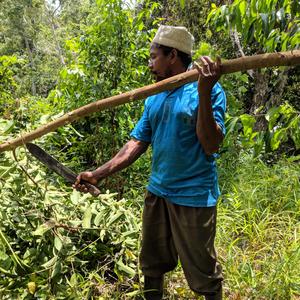
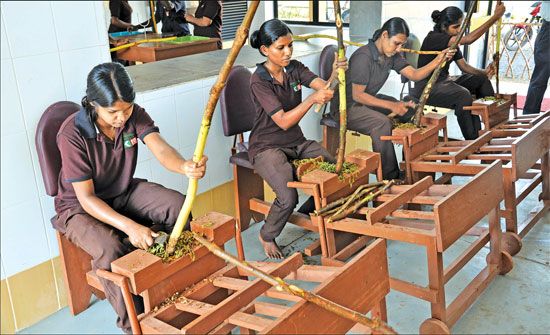
Pic souce-Burlapandbarrel.com & pinterest.
Wash the cut and trimmed branches (average cutting size of branches is 5ft in length) to remove any kind of soil and dusts and washing also allow the branches to soften its bark. Research show that freezing cinnamon branches at -10 degree C for 8-10 hrs can make it easier and faster to peel the inner bark of cinnamon tree to get cinnamon spices.
Note:- The best time to cut the cinnamon branches are early morning because at this time the tree are moist and easy to peel its outer layer.
Step-2: Rub the cinnamon stick
Before the soft cinnamon inner layer can be peeled, it is rubbed with a special stick. When it starts to bleed water, it is ready to be peeled the inner layer.
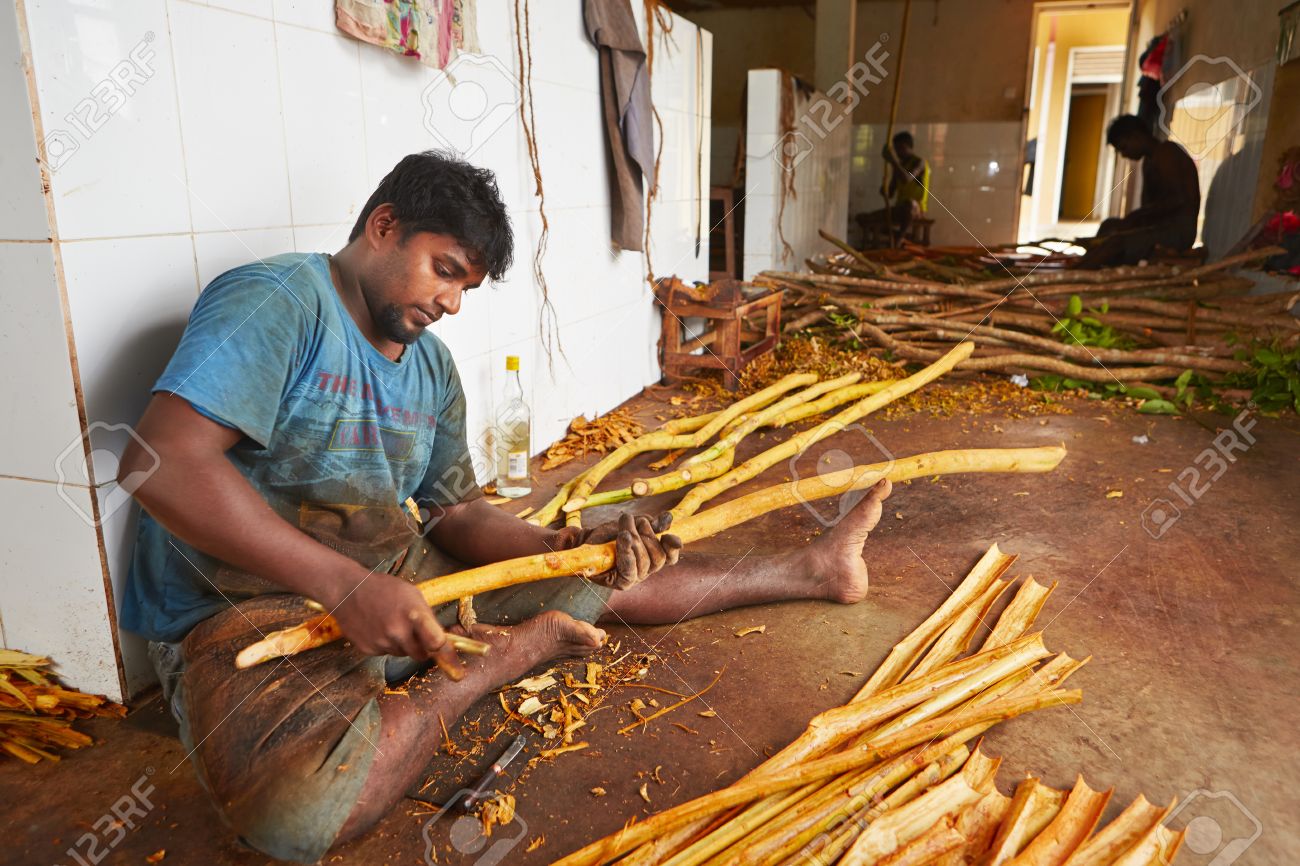
Pic source- 123RF
Step-3: Peel off the cinnamon bark
Gently peel the soft cinnamon inner bark from the cinnamon branches with hand, it is done by specialized worker. Once peeled, all the small pieces of inner bark are assembled or stuffed in the larger size of the peeled inner bark and tied together and known as cinnamon Quills. It is then allowed to dried in the shade to prevent warping for at least 4-5 days and then placed in subdued sunlight for further drying.

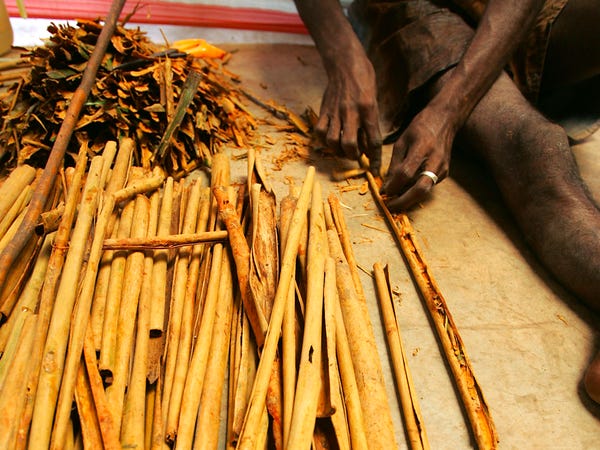
Pic source- 20twenty
Step-4: Dried the rolled inner bark of cinnamon
After drying naturally, the cinnamon stick is compacted and rolled tighter and then graded. The quality of cinnamon depends on how well the bark is removed from the stems. The larger pieces or quills can be sold for more than the smaller broken pieces from the branches is removed off by peeling it.
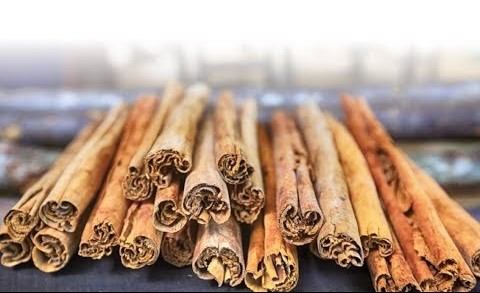
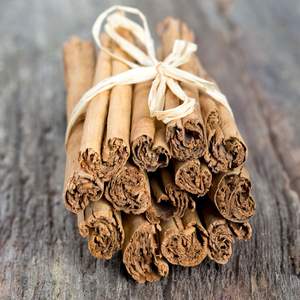
pic source- spice station
After removal of the outer skin. The inner bark is peeled/curled and allowed to be dried in the darker area. Once the inner bark is dried it automatically curled down. the bark naturally curls into quills (sticks).
Cinnamon cultivation in India: –
Cinnamon is native to Sri Lanka but it is also grown in lower elevation of wester Ghats in India especially in one or two locations in Kerala, Tamil Nadu & Karnataka. Cinnamon cultivation in India is primarily focused in the southern regions like Kerala, TamilNadu & Karnataka. Kerala is one of the Indian states which cultivate maximum of cinnamon. The districts are Kozhikode, Wayanad, and Idukki. Nilgri area of TamilNadu states & some part of western ghat belong to karnataka cultivate cinnamon.
Two variety of cinnamon tree suitable for high yielding in India are :- Nava shree & Nitya shree which was developed by IISR.
Types of Cinnamon:-
Cinnamon comes in several types, each with distinct flavors, aromas, and uses. The most common types of cinnamon include:-
- Ceylon Cinnamon (True Cinnamon)
- Cassia Cinnamon
- Korintje Cinnamon (Indonesian cinnamon)
- Saigon Cinnamon (Vietnamese Cinnamon)
- Malabar Cinnamon
Ceylon Cinnamon (True Cinnamon):-
Ceylon cinnamon also known as “True Cinnamon,” is a type of cinnamon derived from the inner bark of the Cinnamomum verum tree. It is native to Sri Lanka and Southern India. It is prized for its delicate and sweet flavor, making it a preferred choice for culinary uses, especially in desserts and delicate dishes.
Characteristics of Ceylon Cinnamon:
- Flavor and Aroma: Ceylon cinnamon has a milder & sweeter taste as compared to other types of cinnamon like cassia cinnamon.
- Appearance: The bark of Ceylon cinnamon is thin and papery and it is usually rolled into a single quill (as opposed to the thicker, double-rolled quills of cassia cinnamon).
- Texture: Because the bark is thinner, Ceylon cinnamon is often more fragile and easier to grind into a fine powder.
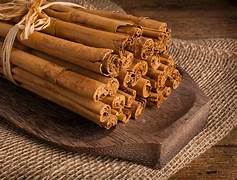
pic source-https://in.images.search.yahoo.com/search/images;_ylt=Awrx_KiY27xm6bIGa0i7HAx.;_ylu=Y29sbwNzZzMEcG9zAzEEdnRpZAMEc2VjA3BpdnM-?p=ceylon+
Cassia Cinnamon:- Cassia cinnamon is a common type of cinnamon derived from the bark of the Cinnamomum cassia tree, which is native to China and widely grown in Indonesia, Vietnam, and other parts of Southeast Asia. Cassia cinnamon has a stronger, more intense flavor
pic source-healthjade.com
Korintje Cinnamon(Indonesian cinnamon):-Korintje cinnamon, also known as Indonesian cinnamon, is a type of cassia cinnamon that comes from the Cinnamomum burmannii tree, predominantly grown in Indonesia. It is one of the most commonly used cinnamons in the United States, especially in commercial baking and food products.
Characteristics:- Korintje cinnamon has a warm, slightly sweet flavor that is milder than Chinese cassia but stronger than Ceylon cinnamon. Its aroma is fragrant and familiar, often associated with traditional baked goods like cinnamon rolls and apple pie. Due to its thicker bark, Korintje cinnamon has a rougher texture compared to the thinner, papery Ceylon cinnamon.

pic source-www.spicemountain.co.uk
Saigon Cinnamon (Vietnamese Cinnamon)-Saigon cinnamon, also known as Vietnamese cinnamon, is a type of cassia cinnamon derived from the bark of the Cinnamomum loureiroi tree, which is native to Vietnam. It is known for its intense flavor and aroma, making it one of the most potent and highly prized cinnamons in the world.
Characteristic:-Saigon cinnamon has a very strong, sweet, and spicy flavor, much more intense than other types of cinnamon, including Korintje and Ceylon. The bark of Saigon cinnamon is thick and hard, similar to other cassia cinnamons, but it is often darker in color, ranging from reddish-brown to dark brown. It is usually sold in stick form or ground into a powder.

pic source:-www.onlyfoods.net
Malabar Cinnamon:-Malabar cinnamon, also known as Cinnamomum tamala or sometimes referred to as Indian cinnamon, is a type of cinnamon that is less common than Ceylon or cassia cinnamon. It originates from the Malabar Coast of India.
Characteristic:– Malabar cinnamon has a more robust, slightly bitter, and earthy flavor compared to Ceylon cinnamon. It lacks the sweetness found in Ceylon and is not as spicy as cassia varieties.

Pic source- www.indiamart.com
Culinary use of Cinnamon-
Cinnamon is a versatile spice having wide range of culinary applications for both sweet and savory food items. Example are:-
In Baking and Desserts preparation:- Cinnamon powder is one of the most used spices in Baked products like:-
- Cinnamon Rolls: Cinnamon is the star ingredient in these sweet, spiraled pastries filled with cinnamon sugar and often topped with icing.
- Cookies and Cakes: Cinnamon is commonly used in cookies like snickerdoodles, gingerbread, and cakes such as coffee cake and spice cake.
- Pies and Tarts: It’s a classic addition to apple pie, peach cobbler, and other fruit-based desserts, where it enhances the natural sweetness of the fruit.
- Muffins and Quick Breads: Cinnamon is often added to batters for banana bread, muffins, and scones to give them a warm, spiced flavor.
- Rice Pudding and Custards: Ground cinnamon is sprinkled over or infused into these creamy desserts.
- Snickerdoodles-Soft, chewy cookies rolled in a cinnamon-sugar mixture before baking.
- Cinnamon Buns-Similar to cinnamon rolls but often less sweet, with a denser dough and sometimes topped with nuts or raisins.
- Cinnamon Bread-Yeast or quick bread swirled with cinnamon sugar, often baked as a loaf or made into pull-apart bread.
- Cinnamon Muffins-Muffins flavored with cinnamon, either mixed into the batter or sprinkled on top.
- Cinnamon Coffee Cake-A moist, tender cake often layered with cinnamon sugar and sometimes topped with a crumbly streusel.
- Apple Pie-A classic pie filled with spiced apples, where cinnamon is a key ingredient in the filling.
- Churros-Fried dough pastries rolled in cinnamon sugar, often served with chocolate sauce.
- Cinnamon Donuts-Donuts coated with cinnamon sugar or with a cinnamon-flavored glaze.
- Cinnamon Sugar Cookies-Simple cookies flavored with cinnamon and often coated in a cinnamon-sugar mixture.
- Cinnamon Scones-Rich, crumbly pastries flavored with cinnamon, often drizzled with a glaze or dusted with powdered sugar.
- Cinnamon Rolls Cookies-Cookies that mimic the flavor and appearance of cinnamon rolls, with a cinnamon swirl and a sweet glaze.
- Cinnamon Raisin Bagels-Chewy bagels studded with raisins and flavored with cinnamon, often enjoyed with cream cheese.
Used in Beverages:-
- Chai Tea: Cinnamon is a key spice in traditional Indian chai, providing warmth and depth to the tea.
- Mulled Wine and Cider: Whole cinnamon sticks are simmered in these warm, spiced drinks, often with other spices like cloves and star anise.
- Hot Chocolate: Cinnamon can be added to hot chocolate for a cozy, spiced twist.
- Smoothies: A pinch of cinnamon can enhance the flavor of fruit-based smoothies, especially those with bananas or apples.
Used in Savory Dishes
- Curries: In Indian and Middle Eastern cuisines, cinnamon is often used in spice blends (such as garam masala) to add warmth to curries and stews.
- Tagines: Moroccan tagines frequently feature cinnamon, which pairs well with lamb, chicken, and dried fruits like apricots or dates.
- Rice and Pilaf: Cinnamon sticks are added to rice dishes, such as biryanis and pilafs, to infuse them with a subtle spiciness.
- Meat Dishes: Cinnamon is used in rubs and marinades for meats, particularly pork, lamb, and poultry, to add a sweet-spicy note.
Spice Blends or Masala:-
- Garam Masala: A key ingredient in this Indian spice blend, cinnamon adds warmth and complexity.
- Chinese Five-Spice: Cinnamon (or its relative, cassia) is one of the five spices in this blend, which is used in Chinese cooking to flavor meats and stir-fries.
- Pumpkin Spice: A popular blend in the U.S. that includes cinnamon, nutmeg, ginger, and cloves, often used in desserts and beverages.
In Preserves and Pickles:-
- Jams and Jellies: Cinnamon enhances the flavor of fruit preserves, especially those made with berries, peaches, or apples.
- Pickles: Cinnamon sticks are sometimes added to pickling brine for fruits and vegetables, lending a warm spice to the final product.
In Breakfast Dishes:-
- Oatmeal: Cinnamon is a classic addition to oatmeal, often paired with brown sugar, apples, or nuts.
- French Toast: Ground cinnamon is commonly mixed into the egg batter for French toast, providing a sweet, spiced flavor.
- Pancakes and Waffles: Cinnamon can be added to pancake or waffle batter for an extra layer of flavor.
In Snacks items:-
- Cinnamon-Sugar Nuts: Nuts like almonds or pecans are often coated with a mixture of cinnamon and sugar and then roasted to create a sweet, spiced snack.
- Popcorn: Cinnamon sugar can be sprinkled over popcorn for a sweet snack alternative.
- Granola: Cinnamon is a common flavoring in granola, where it pairs well with oats, honey, and dried fruits.
Popular Indian brand of Cinnamon stick available in market: –
- Bake king cinnamonstick
- Looms & weaves
- Sorich organic Ceylon cinnamon
- Sainik cinnamon stick brand
- Wonderland food
- Grandma agro cinnamon stick
- Nutro active cinnamon stick
- FYN True cinnamon stick
- Manushree spices
- Yuvika dalchinni
- Nature vit dalchini
- Keya pure
The average price of Ceylon cinnamon stick in the Indian market are in between Rs 2000-3000 rupee per kg. whereas the cassia cinnamon is priced between Rs 1000-1500 per kg.


Content Reference:-
The above content has been compiled after referring various culinary books, Research Papers, Research articles, Food magazines, news papers, top culinary websites, Govt websites, personal interaction with renowned chefs from various hotel brands like The Ashok Group of hotel, ITC, Oberai, Leela, Park Hotels & various IHM Faculties, Nutritionists etc. & many more. The picture which i have used has been taken from the open source website .Some of the important website referred for the above content are:-
- https://www.thespruceeats.com/what-is-cinnamon-765161
- https://www.kingarthurbaking.com/blog/2021/11/04/cinnamon-a-complete-guide-to-types-flavors-and-how-to-use-them
- https://www.eatingwell.com/article/8051448/different-types-of-cinnamon/
- https://foodcriticanmol.com/cinnamon-benefits-types-uses-and-more/
- https://food.ndtv.com/food-drinks/6-reasons-why-you-should-be-drinking-cinnamon-water-daily-1814994
- https://www.allrecipes.com/article/types-of-cinnamon/
- https://www.thedailyeco.com/different-types-of-cinnamon-390.html
- https://www.elo.health/articles/the-ultimate-guide-to-cinnamon/
- https://typesofcinnamon.com/index.htmlhttps://www.sciencedirect.com/journal/international-journal-of-hospitality-management/vol/100/suppl/C
- Indian institute of spice research
- Kerala agricultural university
- Kishankerala.net.
- Amazon
- Science direct
- Spice board of India
- BBC Good food
- The culinary cookbook
- The spruce eat
- Health.net
- Science.howstuff.com
- Masterclass.com

